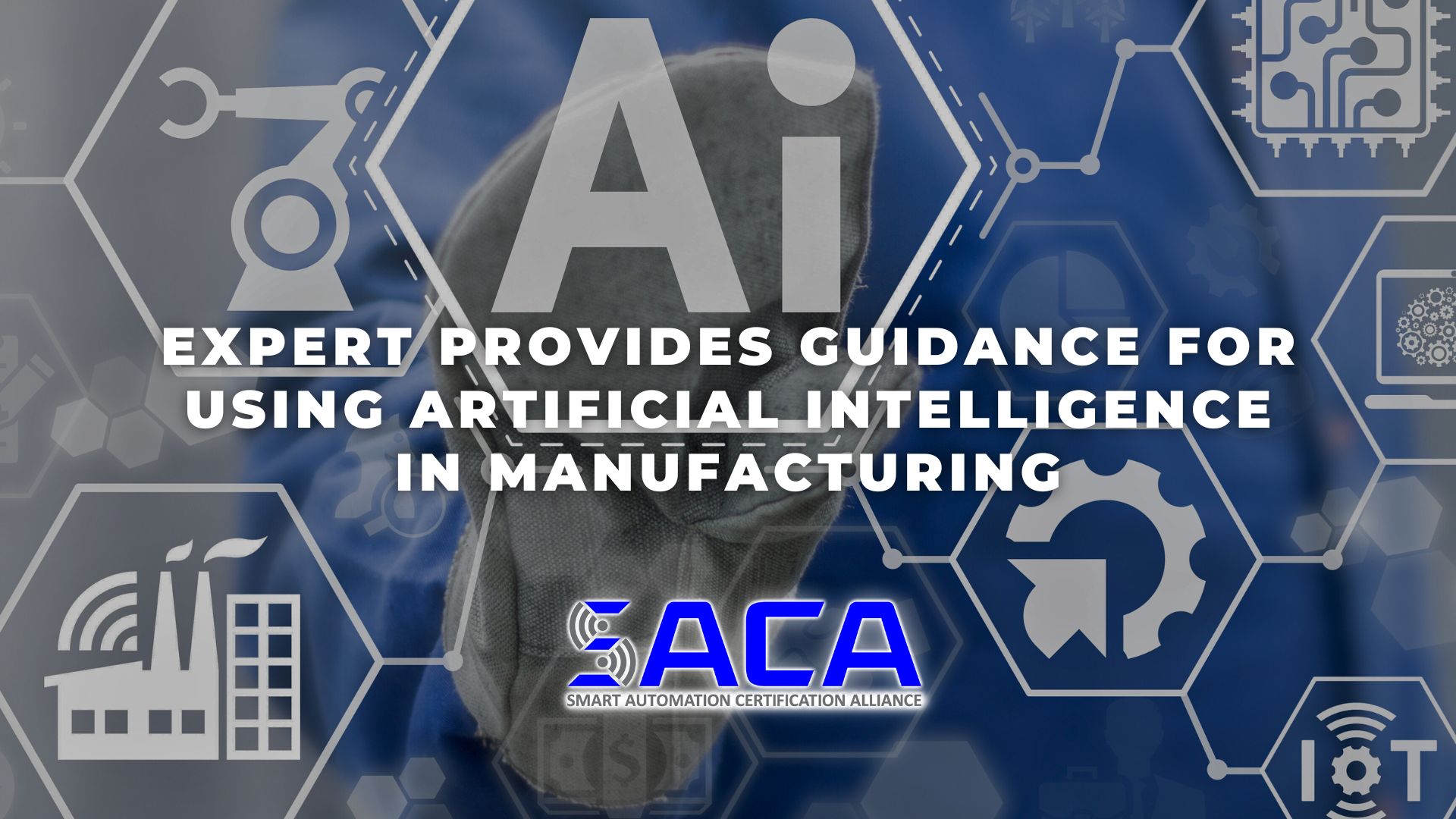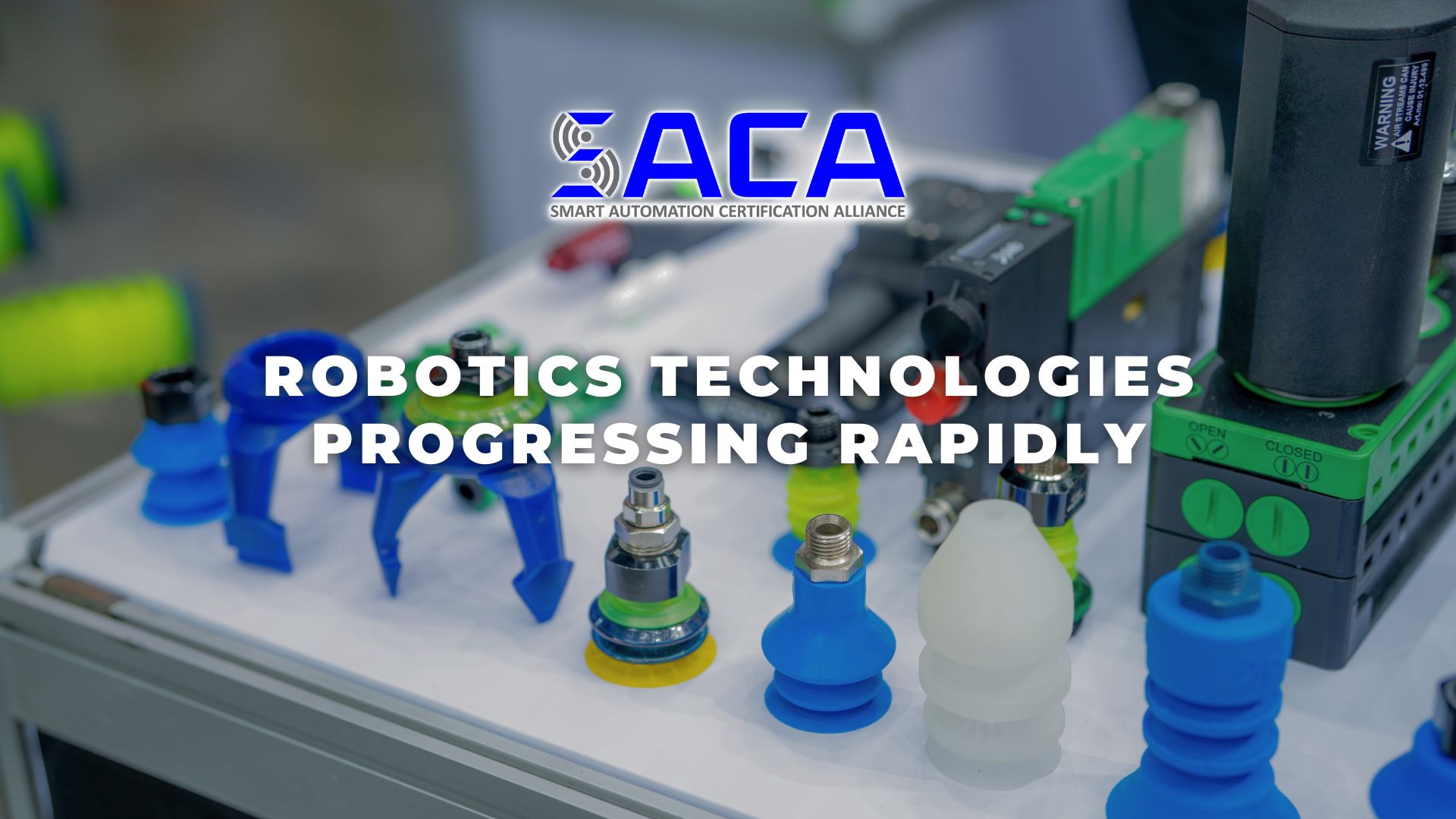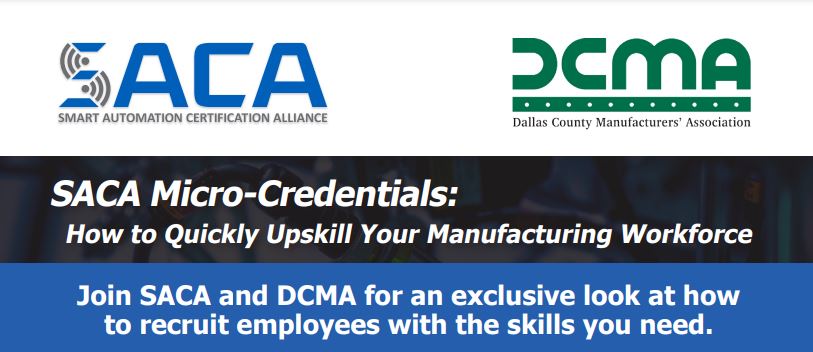Condition Monitoring Offers Cost-Effective Entry into World of Industry 4.0
According to a recent IoT For All article by Brian Harrison, “[t]he factory of the future, in which all conceivable devices are connected with their intelligence and autonomy and each plant process is constantly optimized through sophisticated real-time analytics, has long been the utopia of industrial automation.”
After all, what manufacturer doesn’t want to be as efficient and productive as possible? Harrison notes that these new advanced automation technologies “promise to unlock unseen levels of productivity and efficiency while removing the need for humans to carry out many of the more repetitive or labor-intensive tasks required, potentially saving organizations vast amounts of money and time.”
However, all you have to do is look at the current state of modern manufacturing to know that “the idea of the smart factory is not yet a reality for all.” While many manufacturers have embraced new automation technologies, others have yet to do so, citing both the cost of technology and inability to hire skilled workers that know how to use these technologies as reasons.
Harrison acknowledges that “[i]t takes time, planning, and often significant investment to radically modernize an entire plant from the ground up.” But maybe “a radical rebuild is not necessary to start embracing the benefits of Industry 4.0.”
What if, instead, manufacturers started small and built up their capabilities over time? According to Harrison, “[i]ncremental improvements, such as adding condition monitoring capabilities to existing equipment can unlock a vast potential for savings across the areas of efficiency, productivity, and reliability throughout the plant.”
The author argues that manufacturers “can implement condition monitoring without substantially rethinking existing processes, and you can roll it out on a much smaller scale to embrace the efficiency, reliability, and productivity savings promised by Industry 4.0, at a fraction of the cost.”
Doing so “offers greater visibility over running processes. Digital connectivity provides real-time or near-real-time insight into asset health, allowing maintenance teams to focus their efforts where needed and avoid expending resources unnecessarily. It can also prevent large amounts of downtime by flagging and fixing potential issues before they turn into failures.”
Harrison urges manufacturers to “[a]ttach sensors to legacy equipment to measure health, tracking metrics like vibration, temperature, and power signatures for a comprehensive view, avoiding manual component inspection. Measuring and analyzing assets remotely improves plant safety in hazardous areas without endangering personnel.”
Incorporating condition monitoring into manufacturing processes allows manufacturers to transition from reactive maintenance to predictive maintenance. Over time, manufacturers can add more technologies, such as manufacturing execution systems and enterprise asset management systems to more thoroughly take advantage of data being collected.
Harrison concludes that “condition monitoring enables companies to start small, and grow digital capabilities gradually in a more manageable and cost-effective way. This also allows you to prioritize assets in a way that provides the best return on investment. From there, you can expand condition monitoring programs to other operations, and before you know it, much of the plant will be connected.”
Of course, part of the transition to Industry 4.0 has to be upskilling current workers and/or hiring new workers with the skills necessary to operate, maintain, troubleshoot, and repair a wide variety of advanced automation systems. How can manufacturers accomplish this?
Today, more and more employers are looking for workers with industry-standard certifications that prove they have the skills needed. For example, if workers possess a certification from the Smart Automation Certification Alliance (SACA), employers can feel confident they’ve already proven they have the knowledge and hands-on skills needed for working with advanced smart automation technologies. SACA has been hard at work collaborating with industry leaders to develop a wide variety of industry-standard certifications that will help employers find workers who possess the advanced connected-systems skills they need to take their businesses to the next level. Be sure to check out SACA and all it has to offer!
- Published in News
Cybersecurity a Top Concern for Auto Manufacturers
If you were an automotive executive today, what do you think your primary concern might be? Improving safety is always an important concern. Given rising inflation, making vehicles more affordable might also be high on the list. Of course, many of you might also identify navigating the rise of electric vehicles (EVs) as a likely contender.
While those are all good guesses, there’s one issue that Rockwell Automation’s latest State of Smart Manufacturing: Automotive Edition report identified as the primary barrier for growth according to auto manufacturers: cybersecurity. If you think about it, it just makes sense.
Manufacturers everywhere—including auto manufacturers—have embraced new automation technologies because they improve productivity, efficiency, and ultimately profitability. However, as manufacturers add more and more smart devices to their networks, the risk of cyberattacks on those devices increases accordingly.
The bad actors behind the cyberattacks that have made the news in the last few years know that manufacturers often implement new technologies before adding the highly skilled workers they need to keep those advanced systems safe. Auto executives must ask themselves: how safe are our plants from cyberattacks?
Moreover, automobiles themselves have become marvels of the latest modern technologies. From Wi-Fi-enabled vehicles to dashboards that sport screens the size of small televisions, the cars and trucks we drive are “smarter” than ever. And let’s not forget about the next frontier: self-driving vehicles. The earliest models are already on our roads. What happens when they become the norm?
We have a high-tech system of air traffic control that keeps track of all the airplanes in the sky to make sure none of them cross paths. Will we see the same type of system for self-driving automobiles? Can you imagine the technology that will take to keep track of millions of vehicles to ensure they all stay in their lanes? More importantly, can you imagine what would happen if a hacker gained control of such a system, let alone individual vehicles?
These are just a few of the factors that led auto manufacturers to put the spotlight on cybersecurity as the main barrier to continued growth. In a recent Industry Week article, author Dennis Scimeca points out that “[t]he manufacturing sector…presents one of cybercriminals’ most attractive and lucrative targets.”
This is certainly true for auto manufacturers who tend to have a “lack of tolerance for pauses in production and therefore increased willingness compared to other economic sectors to pay ransom demands.” Cyberattacks on Nissan, Ferrari, and Hyundai in the last year have boosted cybersecurity to the top of the pile when it comes to future worries.
Scimeca believes “[t]he increasing connectivity between vehicles provides the largest concern for auto manufacturers.” For example, Brian Denken, Rockwell Automation’s commercial manager for networks and cybersecurity services, North America, notes that “[w]e’re looking at multiple types of connectivity—vehicle-to-cloud for services like navigation, vehicle-to-infrastructure for traffic management and vehicle-to-vehicle for safety communications. Each connection point expands the attack surface and presents unique security challenges that we must address to ensure safe and reliable vehicle operations.”
Cybercriminals also like the automotive industry as a target for the huge amount of data available. Denken points out “[t]his includes personal data from drivers, operational data from vehicle systems, communication data exchanged with external entities and charging data for electric vehicles.”
Denken argues that “[e]nsuring the security of this information is vital to prevent fraud, maintain vehicle performance and safeguard user privacy. This requires advanced encryption, secure communication protocols, and continuous monitoring.”
Scimeca reminds readers that “[f]ocusing too much on the specifics of vehicle connectivity risks losing track of the degree to which automotive plants, some of the most networked plants in heavy industry, also face increasing cybersecurity risks.”
So what’s a vulnerable auto manufacturer to do? Experts agree that it’s critical for manufacturers to hire highly skilled workers that can manage cybersecurity risks, in addition to operating, maintaining, troubleshooting, and repairing the advanced automation systems that are being implemented. Unfortunately, due to the ongoing “skills gap” issue in the manufacturing sector, finding highly skilled workers remains a significant challenge.
How can manufacturers find the workers they need? And how can they be sure that workers have the hands-on skills they need to succeed in the modern workplace? Today, more and more manufacturers are looking for workers with industry-standard certifications that prove they have the skills employers need.
For example, if workers possess a certification from the Smart Automation Certification Alliance (SACA), employers can feel confident they’ve already proven they have the knowledge and hands-on skills needed for working with advanced smart automation technologies. SACA has been hard at work collaborating with industry leaders to develop a wide variety of industry-standard certifications that will help employers find workers who possess the advanced connected-systems skills they need to take their businesses to the next level. Be sure to check out SACA and all it has to offer!
Can AI Help Bridge the Manufacturing Skills Gap?
Unless you’ve been living under a rock over the course of the past year, then you’ve definitely heard of—and possibly even used—generative artificial intelligence (AI), such as ChatGPT. AI has really taken off over the past year or more, and it’s easy to see how useful it can be in areas like software programming and marketing.
But what about manufacturing? With an ongoing skills gap making the manufacturing labor market especially tight, manufacturers are searching for any way to increase productivity and efficiency. Could AI be a solution to their problems?
Those familiar with manufacturing already know that change usually happens incrementally. That’s a polite word for slowly, by the way. AI, however, is a technology associated with exponential, rapid change. Does such technology have a place in the world of manufacturing?
In a recent Chief Executive article, author Dan Bigman details his conversations with Pavan Muzumdar, chief operating officer of Automation Alley, Michigan’s Industry 4.0 knowledge center. According to Muzumdar, generative AI, like ChatGPT, can have a positive impact in manufacturing, if it’s implemented in the right way for the right reasons.
For example, Muzumdar recommends manufacturers “use gen AI to get started on something, use gen AI for ideation, use gen AI to kind of get you a little bit further ahead. But don’t use gen AI for completion.”
Muzumdar also advises that manufacturers “[b]e very cautious in using gen AI for factual information…whatever you ask AI to do, ask it so that the output that you get is in a chunk that you can independently verify. You can get great value, but make sure that you’re doing this ‘trust but verify’ type of approach.”
One successful application many manufacturers have found for AI is helping with old technologies. Many new manufacturing hires don’t know older programming languages, like COBOL, that might still be used in legacy systems. Generative AI can help new programmers decipher old code and write new code in languages they’re not familiar with.
Likewise, generative AI can help a new worker who understands general programming but not, for example, something specific to manufacturing, like CNC programming. According to Muzumdar, these workers “can kind of inductively learn how to do CNC programming just with the help of gen AI. But again, don’t trust it fully; learn how to use it and then verify that by making sure that you’re actually doing some physical tests to see that it’s actually giving you the results.”
Bigman believes that manufacturers should remember that “a gen AI like ChatGPT has digested almost every user’s manual and how-to guide, best practice guide on almost every machine that’s sitting on your shop floor.” Even if it can’t solve every one of your problems, it can accelerate understanding and speed along the process.
Muzumdar agrees, reminding that “[i]t’s not AI, it’s human plus AI. How can I empower my own staff to be much more open about it, knowing that it has limitations, but even things with limitations can have substantial value in making us much more productive.”
Even if AI does not replace workers, the workers of today and tomorrow will need to learn new skills to keep pace with the advanced technologies being implemented in the modern workplace. That’s why manufacturers are increasingly looking to hire highly skilled workers that can operate, maintain, troubleshoot, and repair advanced automation systems.
Unfortunately, due to the ongoing “skills gap” facing industries across the country, finding highly skilled workers remains a significant challenge. How can employers be sure that workers have the hands-on skills they need to succeed in the modern workplace? Today, more and more employers are looking for workers with industry-standard certifications that prove they have the skills needed.
For example, if workers possess a certification from the Smart Automation Certification Alliance (SACA), employers can feel confident they’ve already proven they have the knowledge and hands-on skills needed for working with advanced smart automation technologies. SACA has been hard at work collaborating with industry leaders to develop a wide variety of industry-standard certifications that will help employers find workers who possess the advanced connected-systems skills they need to take their businesses to the next level. Be sure to check out SACA and all it has to offer!
- Published in News, Posts, Technology
SACA Welcomes New Executive Program Director
The Smart Automation Certification Alliance (SACA) is pleased to welcome Sue G. Smith as its new Executive Program Director. Smith joined SACA in May 2024 after working at the highest levels within Indiana’s Ivy Tech Community College for more than 30 years.
During her tenure with Ivy Tech, Smith developed expertise in consulting; workforce and economic development; program and partnership development; and advanced and smart manufacturing. Most recently, she served as Vice President of Ivy Tech’s award-winning School of Advanced Manufacturing, Engineering, and Applied Science (AMEAS).
At Ivy Tech, Smith prioritized strengthening programs with an eye toward economic and workforce development. In particular, she worked extensively with employers throughout Indiana and neighboring states to ensure the programs in the School of AMEAS aligned with industry needs.
Under Smith’s leadership, Ivy Tech’s School of AMEAS grew to be a major economic development resource for Indiana. It also became the first college in the United States to develop and deliver a smart manufacturing degree called Smart Manufacturing Digital Integration (SMDI).
Ivy Tech’s SMDI degree was based upon SACA credentials that were vetted with manufacturing employers. The SMDI degree has been especially attractive to new industries looking to move into Indiana, since advanced automation skills are critical for cutting-edge technologies used in electric battery, electric vehicle (EV), semiconductor, and biopharmaceutical manufacturing.
The success of Ivy Tech’s School of AMEAS and its groundbreaking SMDI degree has captured the attention of not only other community colleges and universities around the country, but also organizations around the world. In fact, Smith recently delivered a keynote address at the European Educational Congress in San Sebastian, Spain, on smart manufacturing and the implementation of embedding SACA credentials stacking into programs.
SACA Executive Director Jim Wall is excited to see Smith use her experiences at Ivy Tech to help other organizations build similar programs. According to Wall, “SACA’s been growing pretty dramatically in the last two years, so we needed to bring in a nationally-known leader in education and industry. We’re very proud and fortunate to say that Sue Smith has come on board as our Executive Program Director.”
Wall notes that “Sue’s primary responsibility is going to be helping to grow SACA membership by being a resource for instructors and administrators across the country. She’ll also be working with some of our industry partners to help them develop pathways internally for their employees that can utilize SACA certifications.”
Smith says, “I’m really excited to be with SACA.” Reflecting on her journey from Ivy Tech to SACA, Smith notes that “as I rolled that [SMDI] out at Ivy Tech, I got tons of calls from other community colleges and organizations saying, ‘Hey, how did you do this? Can you do this for us?’ So, when this position came up, I thought, ‘Yeah, I think I can do that for other schools and other industries.’”
What does Smith hope to accomplish with SACA? “I’m trying to accomplish that sort of ‘high tide raises all boats,’ if you will. I’m trying to make this opportunity available for employers and for community colleges and universities in any state.”
About SACA
SACA sits at the forefront of the effort to certify students and workers who demonstrate the required knowledge and hands-on smart automation skills employers so desperately need. SACA’s certifications were developed in conjunction with industry partners who could speak from experience about their needs when it comes to workers able to work alongside a variety of advanced automation technologies.
SACA offers a wide variety of certifications in popular industrial skill areas, including certifications at the Associate, Specialist, and Professional level. For those wishing to focus on building a strong foundation of skills employers need, SACA also offers many micro-credentials that allow students and workers to add certifications as they master new areas.
For workers, SACA certifications can help market their smart automation skills to potential employers. For those employers, SACA certifications represent confirmation that a worker has the skills to hit the ground running in the workplace. To learn more about Industry 4.0 certifications and how SACA can help both future workers and industrial employers begin the task of bridging the Industry 4.0 skills gap, contact SACA for more information.
- Published in News
Every Worker is a Tech Worker
Do you remember your days as a student? If you were like most kids, you couldn’t wait to be done with school. No more teachers. No more books. No more exams. No more learning stuff you didn’t care about. Just launch out into the real world and get on with life. That’s what many students can’t wait for.
Well, as it turns out, the real world has some bad news for today’s students. Once they graduate and think they’re done with school, teachers, books, exams, and learning forever, they enter a workplace filled with modern technology that creates a seemingly-never-ending learning curve.
According to a recent Forbes article by Brian Greenberg, “[i]n the ever-evolving landscape of the modern workplace, a new reality [has] emerged: Every worker, regardless of their field, is now a tech worker to some extent. This shift is not limited to the tech industry and IT; it encompasses every sector, ranging from healthcare, education and carpentry to food service, manufacturing and retail. As technology permeates every aspect of our lives, adapting and continually retraining has become paramount.”
The author speaks from experience, noting that “[t]hroughout my career, I’ve had the privilege of working in several industries and many roles. The one constant was that I needed to keep learning along the way. There was always a new process to understand or technology to become familiar with. There was always something new, and as time went on, there was more and more technology to learn.
Could this phenomenon simply be a short-lived trend? Greenberg doesn’t believe so. Instead, he believes “it’s a mirror reflecting how deeply technology has rooted itself in the fabric of our work life. Integrating technology into every conceivable profession signals a departure from the past, where a clear delineation existed between a ‘tech job’ and a ‘traditional job.’”
For example, the author points out that “[e]lectricians, once primarily concerned with wires and circuits, are now at the forefront of installing smart home systems. This requires an understanding of electrical fundamentals, networking and digital connectivity. They are expected to be adept at navigating complex control systems and staying up to date with the latest smart technology.”
How do students prepare themselves for today’s workplace? Greenberg believes “a continuous learning and adaptability attitude is essential. The demand is no longer for workers who can perform a set task. Instead, the emphasis is on those who can learn, unlearn and relearn as technology evolves.”
Moreover, he notes that “[t]his dynamic is not restricted to mastering new software or tools; it also includes understanding the implications of technology on your industry, keeping up with cybersecurity concerns, staying ahead of digital trends, understanding how your data is managed and developing a mindset for innovation.”
Does this sound intimidating? If so, you’re not alone. However, Greenberg believes “seeing it as an opportunity is more productive. Technology can be a potent tool to enhance efficiency, accuracy, creativity and productivity in any job when used effectively. For instance, automation and AI can take over mundane tasks, freeing workers to focus on more strategic, creative aspects of their roles.”
But what if you just want to be a “traditional worker” and not a “tech worker”? In today’s workplace that just might not be possible any longer. The author notes that “[w]herever you look, technology is enhancing jobs…tech literacy has become a fundamental skill, just like reading and writing. People must be familiar with essential tech tools and concepts relevant to their fields and be ready and able to explore new digital avenues as they emerge.”
Fortunately, workers don’t have to meet this challenge alone. According to Greenberg, “[o]ngoing reskilling is a responsibility shared by everyone, employees and employers alike. Companies must provide learning opportunities, time and resources to help their staff keep pace with technological advancements. These could include training programs, workshops, online resources or partnerships with educational institutions.”
As opportunities are made available to them, “workers must embrace their identity as tech workers, regardless of their job titles. This means being proactive in learning new skills, adapting to new tools and being open to how technology can improve their work and lives.”
Greenberg issues “a call to embrace the new realities of the workplace, where technology is not just an enabler but a necessary partner in every career path. We can successfully navigate this new landscape by adopting a continuous learning mindset, seeking opportunities to upskill and leveraging technology to our advantage. The future of work is here, and it’s undeniably tech-centric.”
Is your employer adequately equipping its workers with opportunities to build the tech skills they need to survive and thrive in today’s technology-driven workplace? In addition to upskilling current workers, employers need to ensure that new workers have the hands-on skills they need to succeed.
Today, more and more employers are looking for workers with industry-standard certifications that prove they have the skills needed. For example, if workers possess a certification from the Smart Automation Certification Alliance (SACA), employers can feel confident they’ve already proven they have the knowledge and hands-on skills needed for working with advanced smart automation technologies. SACA has been hard at work collaborating with industry leaders to develop a wide variety of industry-standard certifications that will help employers find workers who possess the advanced connected-systems skills they need to take their businesses to the next level. Be sure to check out SACA and all it has to offer!
- Published in News
Register for the Next SACA Gold Certification Workshop!
WHAT: SACA Gold Certification Workshop
WHEN: Monday, June 10 – Friday, June 14, 2024 | 8 am-4 pm
WHERE: Lakeshore Technical College, Cleveland Campus
SACA is excited to announce its next Gold Certification Workshop, offered in partnership with Lakeshore Technical College and LAB Midwest. This workshop presents an excellent opportunity for educators and workforce professionals interested in upskilling to gain valuable SACA credentials.
The workshop will feature assessments for 20 different Gold Level certifications, comprised of the Associate level certifications and many of the micro-credentials from the Certified Industry 4.0 Automation Systems Specialist certification. Participants will train on equipment before certifying in the specified testing areas.
IMPORTANT DETAILS:
CLICK HERE to register for the Gold Certification Workshop
For more information, download a Gold Certification Worshop flyer.
COST: $475 per day; includes lunch | $1,995 for the entire 40-hour week
Note: Silver certifications must be completed before taking gold exams. If you have not completed your silver certifications, please contact Lucas Dulmes at lucas.dulmes@gotoltc.edu.
When completing registration for this event please select the date/dates you would like to attend along with the SACA Gold Level certifications you would like to complete. Please select no more than 3 per day to allow enough time to complete each certification.
We look forward to seeing you in June at the Cleveland Campus of Lakeshore Technical College for the Gold Certification Workshop. To learn more about Lakeshore Technical College and how SACA certifications are helping students prove they possess the hands-on skills needed to excel in the modern workplace, check out this video:
- Published in News
Robots Continue to Drive Adoption of Advanced Automation Technologies
Are you old enough to remember when robots were futuristic, rather than an ever-expanding part of our everyday lives? While most of us still don’t have Jetsons-level robots to take care of all our housework, many of us do own robotic vacuums that at least clean the floors on a regular basis.
Many of us also work alongside robots in the workplace. This is especially true if you’re in any kind of modern manufacturing. From welding robots to automated guided vehicles, robots have become deeply ingrained in today’s manufacturing facilities that are embracing all sorts of new advanced automation technologies.
In a recent Forbes article, author Steve Banker recounts his experiences attending MODEX trade shows in 2016 vs. 2024. In 2016, he only remembered three robotics exhibitors at the show. This year, however, “33 exhibitors had the word ‘robot’ or ‘robotics’ in their title. And almost all the large material handling vendors and systems integrators that don’t have the term ‘robotics’ in their name, were also displaying bots.”
That’s why his visit to MODEX 2024 led Banker to declare this “the year of the robot.” What caught Banker’s eye this year were the “robots that have ‘hands’ for picking cases or eaches.” According to Banker, “[e]ach picking involves picking individual units and putting those items in a container. Until recently, each and case picking were just too difficult for bots.”
The robotics on display at MODEX 2024 revealed solutions that have made each and case picking possible by combining five different technologies:
- Robotic arms: “This is a mature technology that has been used for years in automotive manufacturing.”
- Robotic “hands” powered by suction cups: “The solutions have compressors that provide the right amount of suction for picking different sizes and weights. There can be different arrays of suction cups.”
- Vision systems: “Vision systems combined with AI allow the system to know what suction cups to initiate and how much compression to use.”
- Artificial intelligence: “Machine learning also comes into play. For example, if the system has trouble picking a particular item, an alert can tell a planner not to allow that stock keeping unit to enter the robotic picking queue.”
- Software: “Finally, complex software can be necessary. If you are floor loading a truck with containers of different sizes and weights, the software knows that the weight must be evenly distributed, that easily crushed items need to go on top, and there is a Tetris type solve to make sure as many items as possible can be loaded. Pallet loading requires a similar type of software solve.”
While Banker notes that many of these solutions “picked slower than a human would and could not cover the same range of SKUs that a person could,” he notes that they’re the future because “people burn out on this kind of task after a couple of hours and need to be rotated to a different task. A bot just keeps working. It is also increasingly tough to hire warehouse workers. Finally, a bot can work in an environment, hot and cramped, that a worker would not.”
Should this concern humans who fear being replaced by robots? Absolutely not! Companies that have embraced new automation technologies report that employee fears of job loss are overstated, because these advanced automation technologies will not and cannot replace highly-skilled human workers. Simply put, there has to be someone to operate, maintain, repair, and troubleshoot these technologies throughout the facilities they’re used in.
Whether you decide to train a current worker or hire someone with the special skills you need, you’ll need to be sure they have the skills to hit the ground running. If they possess a certification from the Smart Automation Certification Alliance (SACA), you can feel confident they’ve already proven they have the knowledge and hands-on skills needed for working with advanced smart automation technologies. For example, companies looking to implement the latest robotics technologies would be interested in workers with SACA’s Certified Industry 4.0 Robotics Specialist certification. Be sure to check out SACA and all it has to offer!
- Published in News
Skill Development Essential to the Future of Manufacturing
It’s no secret that United States manufacturers still struggle with an ongoing labor shortage. Those unfamiliar with the manufacturing “skills gap” might assume that it’s a result of the upheaval that occurred during the COVID-19 pandemic. However, the problem existed long before 2020.
For many years, manufacturers have encountered difficulty filling open positions, particularly for jobs that require highly technical skills. The industry-wide embrace of advanced automation technologies, often referred to as “Industry 4.0,” has created a growing demand for highly skilled workers, but the supply of such workers has yet to catch up.
In fact, a 2021 study by Deloitte and the Manufacturing Institute projected that more than two million manufacturing jobs could go unfilled by the end of this decade. As post-pandemic recovery continues, manufacturers must find a way to close the skills gap as soon as possible.
According to a recent IndustryWeek article by Josh Cramer, “career possibilities in the fields of additive manufacturing, robotics, automation and AI” will “require candidates who are properly trained in critical thinking, problem-solving, communication and innovation.”
Cramer notes that “[t]o generate a manufacturing resurgence in the U.S., we must tackle this workforce need with a multifaceted approach that includes building awareness—among both youth and adults—of pathways to entering the industry.”
Moreover, he believes that “[o]n the technical side, it is imperative that the candidates are equipped with enhanced skills, particularly for the benefit of small- and mid-sized companies that make up the majority of manufacturing in our nation (and must do more with less).”
While the manufacturing skills gap is a national problem, Cramer advocates for local solutions. For example, he believes “[t]here is great strength in leveraging national resources on the local level to create manufacturing skills programs. Bringing in local leaders in industry, government and academic to define skill sets, competencies and career pathways will both strengthen the local economy and help further a national manufacturing resurgence.”
In the author’s opinion, “[t]he future of US manufacturing involves innovation, education, and collaboration to empower the next generation and strengthen the nation’s manufacturing sector.” He envisions “local teams leverag[ing] the nation’s best practices and strategies, including outreach, onboarding programs and training for reskilling and upskilling.”
The collaboration needed will involve educators following the lead of industry partners to ensure that they’re teaching the advanced skills that industry needs most. Educators would also do well to prepare their students for career pathways that are defined by industry-standard certifications that represent a set of skills defined by industry as necessary to thrive in the modern workplace. For example, if workers possess a certification from the Smart Automation Certification Alliance (SACA), employers can feel confident they’ve already proven they have the knowledge and hands-on skills needed for working with advanced smart automation technologies. SACA has been hard at work collaborating with industry leaders to develop a wide variety of industry-standard certifications that will help employers find workers who possess the advanced connected-systems skills they need to take their businesses to the next level. Be sure to check out SACA and all it has to offer!
- Published in News
SACA & DCMA to Host Manufacturing Recruiting Technical Work Group
The Smart Automation Certification Alliance (SACA) is pleased to announce that it is partnering with the Dallas County Manufacturers’ Association to host an exclusive Manufacturing Recruiting Technical Work Group meeting on April 5th, 2024, in Garland, Texas.
WHO IS IT FOR?
The technical work group will identify the competencies employers are seeking when they hire and promote employees in these technical positions. Ideal participants include people responsible for operations, maintenance, process control and quality. This event is open to all industrial employers. There is no cost to attend. Continental breakfast is included.
WHO WILL BE PRESENTING
Get first access to updates from SACA Executive Director Jim Wall on new credentials, occupational alignment and further expansion plans. Guest speakers will share insights into topics like K-12 pathways, industry-education alignment, statewide adoption of certifications, and more.
WHAT IS THE NEED?
Are you struggling to find workers for your open positions? Are you investing in automation and now need to upskill/reskill your employees? Do you want a workplace culture where people seek to learn, grow their skills and stick around long-term?
Discover how industrial employers are hiring, training and retaining highly-skilled workers using micro-credentials from the Smart Automation Certification Alliance
- Learn about the only Industry 4.0 certifications developed by employers, for employers
- Get a roadmap to align highly-targeted micro-credentials with the exact skills incumbent workers in your company need
- Discover how to recruit SACA-certified employees graduating from advanced manufacturing programs
Interested? Here are the details:
SACA & DCMA Manufacturing Recruiting Technical Work Group
April 5, 2024
Dallas College – Garland Center
675 West Walnut Street, Garland, Texas 75040
Click here to download a flyer with the agenda.
Plan to attend? RSVP here.
About SACA
SACA sits at the forefront of the effort to certify students and workers who demonstrate the required knowledge and hands-on smart automation skills employers so desperately need. SACA’s certifications were developed in conjunction with industry partners who could speak from experience about their needs when it comes to workers able to work alongside a variety of advanced automation technologies.
SACA offers a wide variety of certifications in popular industrial skill areas, including certifications at the Associate, Specialist, and Professional level. For those wishing to focus on building a strong foundation of skills employers need, SACA also offers many micro-credentials that allow students and workers to add certifications as they master new areas.
For workers, SACA certifications can help market their smart automation skills to potential employers. For those employers, SACA certifications represent confirmation that a worker has the skills to hit the ground running in the workplace. To learn more about Industry 4.0 certifications and how SACA can help both future workers and industrial employers begin the task of bridging the Industry 4.0 skills gap, contact SACA for more information.
- Published in News
Automation and the Skills Gap: Hiring for the Present and the Future
Looking to add a highly skilled automation engineer to your company? Finding one may be more difficult than you anticipate—and not for the reason you might think. Although highly skilled workers of all kinds appear to be in short supply these days, the real problem may lie in how employers are communicating their needs to potential workers.
According to a recent IndustryWeek article by Ryan Secard, “[s]killed job candidates say it’s taking longer to find work, despite huge numbers of open positions in manufacturing, because hiring companies either don’t know what they want or can’t explain it to candidates.”
Could ineffective communication be responsible for making the skills gap even wider? According to Secard, “employers appear to be leaving a gap in the market between the open jobs they say they need to fill and how they’re explaining those opportunities to people seeking new positions.” Moreover, “[t]he issue companies are having with anticipating needed skills…is thanks to automation.”
For example, take a look at a common position many companies need to hire for on a regular basis: maintenance technician. Pretty straightforward, right? Not in today’s automated industrial world! As advanced automation technologies proliferate in the workplace, employers are left to guess about the future. Will they need more or fewer employees down the road? More importantly, what skills will their maintenance technicians need in six, twelve, or eighteen months from now?
Compounding these issues is the fact that more than half of job seekers in a recent survey indicated that they believed “a lack of skills is holding [them] back from finding meaningful employment.” Again, communication could be key, as many job seekers report that job descriptions “often include unrealistic minimum qualifications for relatively low positions.”
What can companies do to improve their communications with potential workers and begin filling the open positions they have? First, they must focus on developing a better understanding of the skills they need to hire for. With so many “job candidates confused and depressed,” “the onus is on companies to articulate the skills they’re looking for.”
Secard’s article notes a couple of approaches companies can take. For example, he points out Siemens AG’s focus on mechatronics skills to find versatile engineers. The idea is that “[a]n engineer trained in mechatronics would be capable with mechanical and electrical engineering, along with enough software engineering to implement both.”
An alternative approach can be found in Deloitte’s use of job canvases. “An example job canvas is split into columns: One for core competencies for the role, two columns for skills or programs expected but which may increase or decrease in importance for the role, and a fourth column specifically dedicated to skills the company anticipates will be necessary for the role in the future.”
How might a job canvas look for a manufacturing engineer position? “The first column may look similar to a traditional job posting…[listing] technical writing, systems knowledge, and product engineering.” “But the last column gives a blueprint for at least how the company expects the role to evolve — in this case, the theoretical manufacturing engineer should expect to later become skilled in data driven decision making, digital twins, and robotics.”
As companies continue to struggle to hire the highly skilled workers they need for a modern industrial workplace that’s more automated than ever, it’s important to remember that there’s yet another approach that companies can take. Look for candidates with industry-standard credentials that prove they already possess the advanced automation skills needed to thrive. For example, if workers possess a certification from the Smart Automation Certification Alliance (SACA), employers can feel confident they’ve already proven they have the knowledge and hands-on skills needed for working with advanced smart automation technologies. SACA has been hard at work collaborating with industry leaders to develop a wide variety of industry-standard certifications that will help employers find workers who possess the advanced connected-systems skills they need to take their businesses to the next level. Be sure to check out SACA and all it has to offer!
- Published in News












